
Located in the heart of the Aveyron region, Millau is much more than just a dot on the map of the South-West. Known the world over for its majestic viaduct - often described as the world's most beautiful "corkscrew" - the town's modern architectural prowess is just as seductive as its rich historical heritage. A stroll through the old town will take you back in time: the Place du Maréchal-Foch, with its medieval arcades and fountain, the Church of Notre-Dame and its Baroque frescoes, or the belfry which, from its 42-metre height, offers an exceptional panorama of the town and its surroundings. Wondering what to do in Millau? Here are the 13 must-sees.
1. Stroll through the historic town center
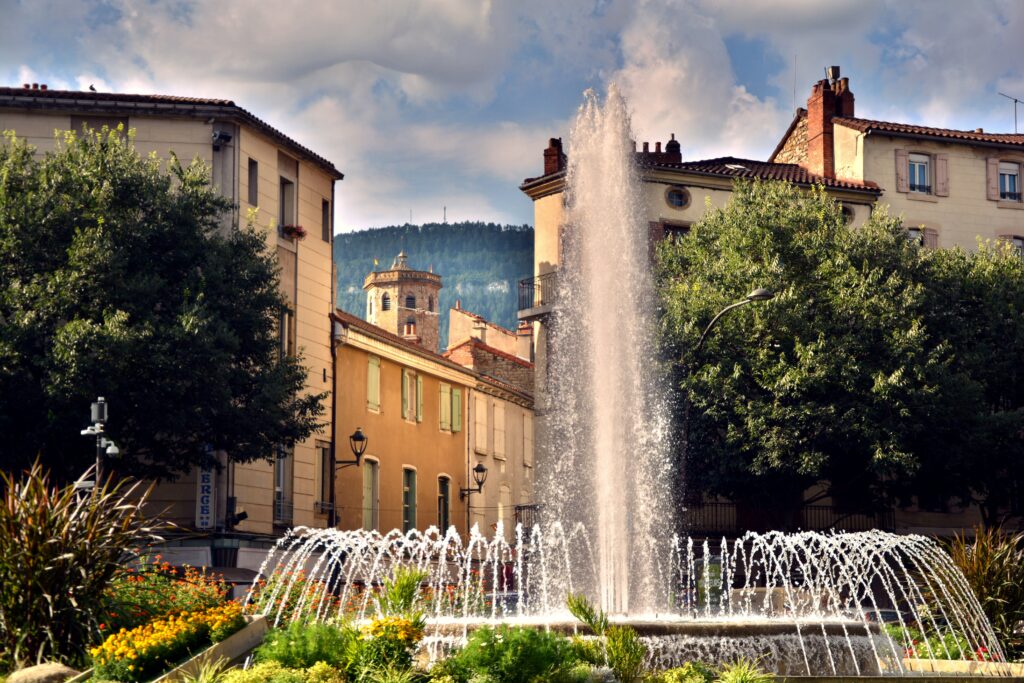
To stroll through Millau's historic center is to plunge into over two thousand years of history. On foot, let yourself be guided by the charm of its cobbled streets and the peaceful atmosphere of its squares. Place du Maréchal-Foch, with its elegant medieval arcades and central fountain, sets the tone. Nearby, the Notre-Dame de l'Espinasse church, a former Romanesque church remodeled in the 17th century, boasts superb Baroque frescoes. As you continue your stroll, don't miss the belfry, a veritable sentinel of the town, rising to a height of 42 metres and offering a breathtaking view over the rooftops and surrounding causses. Other treasures await you : the Château Millavois, a majestic town house, the old mill andthe Pont Vieux, witness to the town's medieval past. A lively historic center to explore as you go.
2. What to do in Millau Climb the belfry for a sublime view

One of Millau's must-see attractions. This ancient square tower, built in the 12th century on the site of the original castle to ensure the town's security, was topped by an octagonal tower in the 17th century and used as a prison. Situated in the heart of the town, the 42-metre-high belfry overlooks the old town of Millau, offering an unrivalled view of the city. Don't be afraid to climb the 210-odd steps. It's an athletic climb, but there's no need to rush. And the view from the top - an incredible panorama of the surrounding area - is well worth the effort.
3. The Millau Viaduct area: a must-see

This unique area, housed in the former farmhouse of Brocuéjouls, invites you to discover the Millau Viaduct, Aveyron, its natural and cultural heritage and local gastronomy. Both a viewing and discovery area and a tourist information point, the site boasts a Welcome and Tourist Information area, where reception staff will be happy to provide you with information on tourist sites and activities; anda belvedere from which you can enjoy the sublime panoramic view of the viaduct, one of the 20 places to see France in grand style. This is not only the highest bridge in France, but also the largest in the world: an architectural masterpiece!
4. What to do in Millau Visit the Millau museum

Housed in a former mansion, the Musée de Millau showcases leatherwork, glove-making... and fossils! It is divided into several thematic areas. The first is dedicated to the local tradition of leatherwork and glove-making. The exhibition begins with a sensory discovery of the different qualities of leather, then moves on to a retrospective highlighting designer gloves, historical and emblematic pieces. Another section of the museum is devoted to paleontology . Thanks to rich collections of fossils, the showcases retrace the geological history of the region and provide a better understanding of the formation of its landscapes.
What to do and see in Aveyron? The 15 must-sees
5. La Graufesenque: a major Gallo-Roman archaeological site in Millau
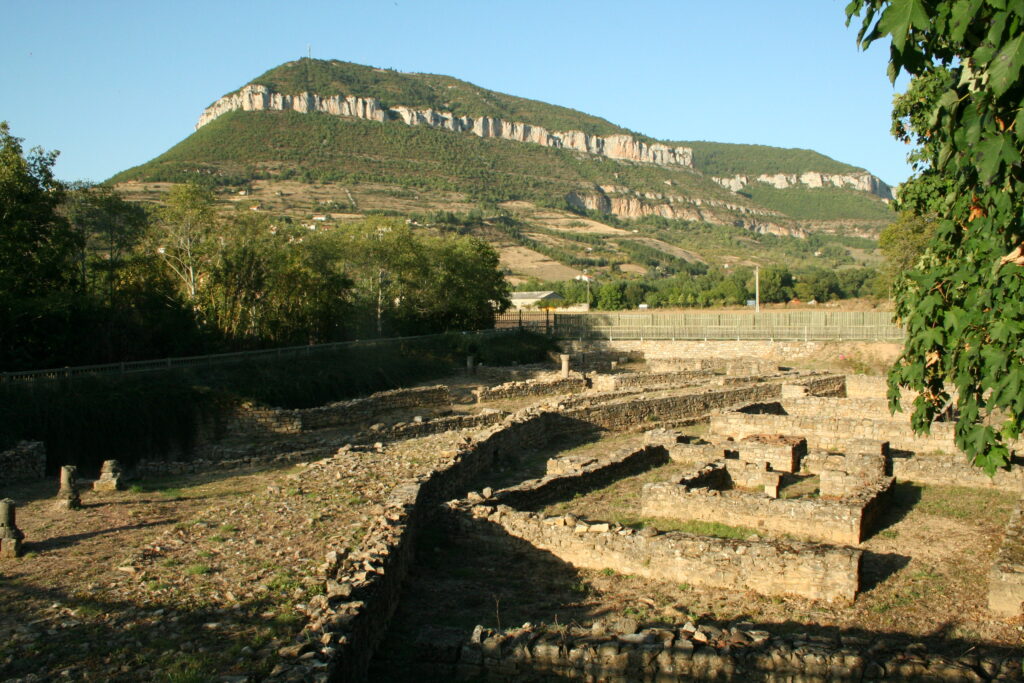
Located just a stone's throw from Millau town center, the La Graufesenque archaeological site offers a fascinating journey into the daily lives of Gallo-Roman craftsmen. This was once the site of Condatomagus, a prosperous town specializing in the production of sigillated ceramics, famous for their brilliant red color and refined decoration. Between the 1st and 2nd centuries AD, the potters of La Graufesenque produced millions of pieces, exported throughout the Roman Empire. Excavations, which began in 1860, have brought to light some 2,500 m² of the site: today, you can see the remains of workshops, dwellings and even a temple, demarcated by low walls. A large pit, filled with defective pieces, has yielded a veritable archaeological treasure trove, enabling us to reconstruct the diversity of shapes, decorations and signatures of the potters of the period.
6. What to do in Millau Stroll through the Causses garden

To say that Millau has a Jardin des Plantes would probably be an exaggeration... but this small botanical garden, both simple and rich, is well worth a visit. Divided into several zones, it showcases the diversity of soils and landscapes characteristic of the Causses. These include a calcicole forest, evocative of the original woodlands, a dry grassland typical of today's arid terrain, populated by boxwood and juniper, and a Mediterranean grassland reminiscent of the sunny slopes of the southern valleys. Stroll at your own pace through this fragrant garden, a veritable biological showcase: it offers a wonderful glimpse of the plant wealth and natural beauty of the Causses.
What to do in Occitanie? The 21 most beautiful places to visit
7. La Cité de pierres, what to do in Millau
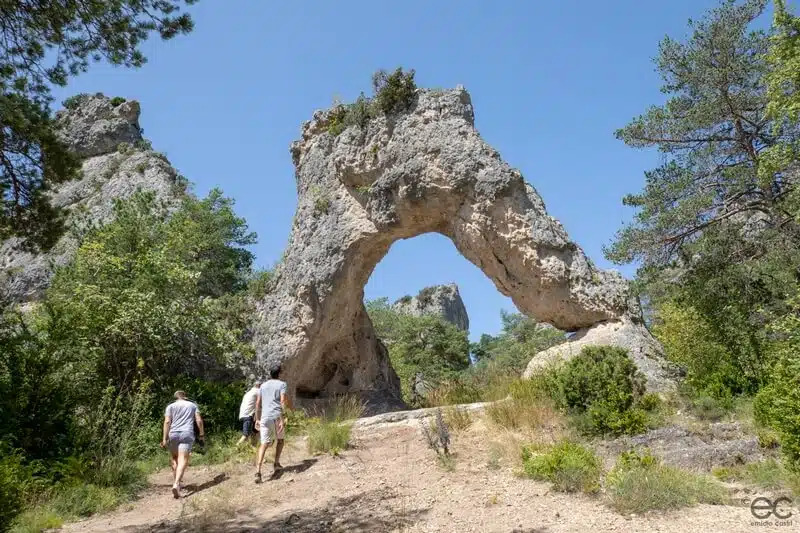
With its 22,400 hectares, this causse is the smallest of the Grands Causses, but also the most unspoilt and wild. It is home to a spectacular site: the chaos of Montpellier-le-Vieux, an impressive 120-hectare rock labyrinth in the commune of La Roque-Sainte-Marguerite. Here, rocks sculpted by erosion evoke strange stone ruins. Thereare many ways to discover the site: six hiking trails for all levels, a small train to enjoy the landscape effortlessly, a via ferrata with five zip lines for thrill-seekers, and an Explor'Games for a fun adventure with family and friends.
8. What to do in Millau Fresh air in the Parc naturel régional des Grands Causses

Since 1995, the Parc naturel régional des Grands Causses has been working to preserve and promote an exceptional natural and cultural heritage. The territory, made up of causses, gorges, mountains and forests, offers remarkable landscapes, home to exceptional biodiversity: more than 2,000 animal and plant species have been recorded here, including the famous cardabelle, emblem of the Grands Causses. Stretching over 93 communes in Aveyron, the park is also a major catchment area, home to almost 64,000 inhabitants. The park can be explored on leisurely strolls or through a multitude of outdoor activities: fishing, canoeing, rafting, hang-gliding and many other natural adventures.
9. Stop by the Tourist Office

TheMillau Grands Causses Tourist Office is much more than just an information point: it's a true partner for organizing and enriching your stay. A friendly, enthusiastic team of local experts are on hand to welcome and guide you. Touch screens and tablets are at your disposal to virtually explore Millau and its must-see sites, and to easily plan your tours and visits. And if you'd like to bring back a souvenir or treat yourself, there's a boutique offering a selection of local gourmet, craft and fun products (honey, beer...)
10. What to do in Millau La Couvertoirade: between history and legend, in the heart of Larzac

One of France's most beautiful medieval villages. Perched on the Larzac plateau, La Couvertoirade is a village where history flirts with legend. In the 12th century, the Knights Templar settled here following a donation of land, and built a defensive castle. Around this fortress, agricultural and pastoral activity gradually developed. When the order was dissolved in 1312, the Hospitallers took over and strengthened the town: within five years, they had built solid ramparts to guard against attacks by the "Routiers", the dreaded armed bands of the time. The perfectly preserved Hôtel de la Scipione bears witness to this eventful period. Now classified as one of France's Most Beautiful Villages, La Couvertoirade's unique heritage, authenticity and timeless atmosphere make it a real attraction.
Tour du Larzac: itinerary & tips
11. Sainte-Eulalie-De-Cernon, one of France's jewels of Templar heritage
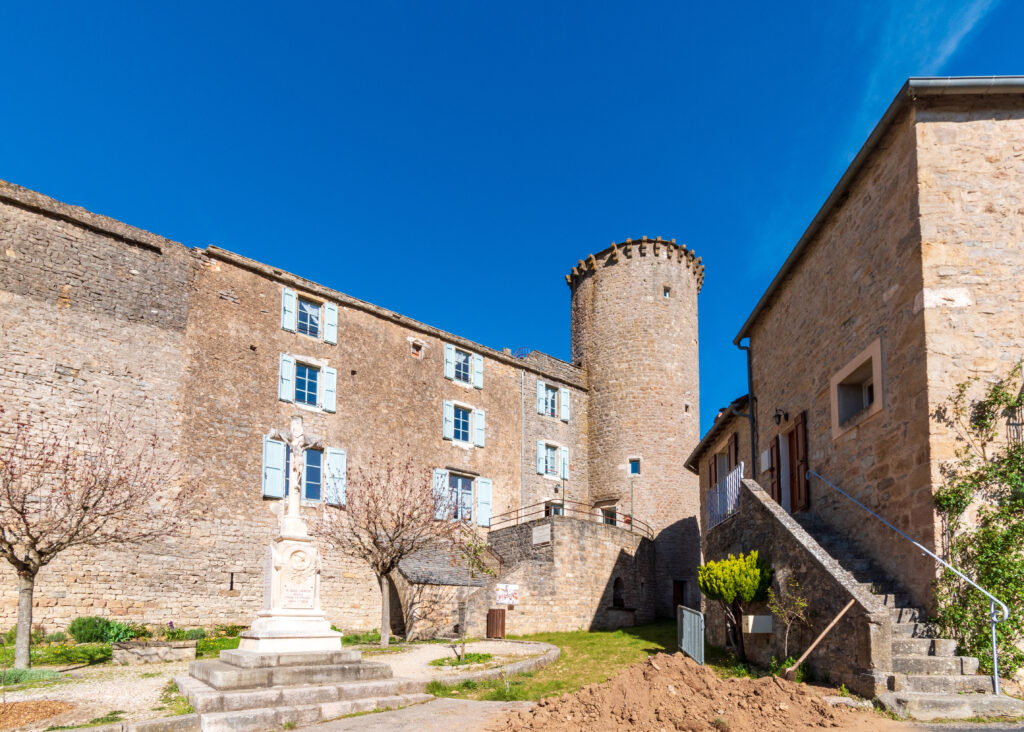
Located between L'Hospitalet-du-Larzac and La Couvertoirade lies one of the jewels of France's Templar heritage: the commandery of Sainte-Eulalie-de-Cernon. This is the largest Templar and Hospitaller headquarters in the region, and a remarkable example of a medieval fortified place. The village, organized around a network of picturesque narrow streets, has preserved its defensive walls intact. Built in the 15th century by the Hospitallers, it features high, austere walls and powerful towers. Even today, the frescoed staircase, large central fireplace, vast windows and a balcony opening onto the courtyard bear witness to the refinement of the period.
12. Le Puncho d'Agast: a legendary viewpoint over Millau
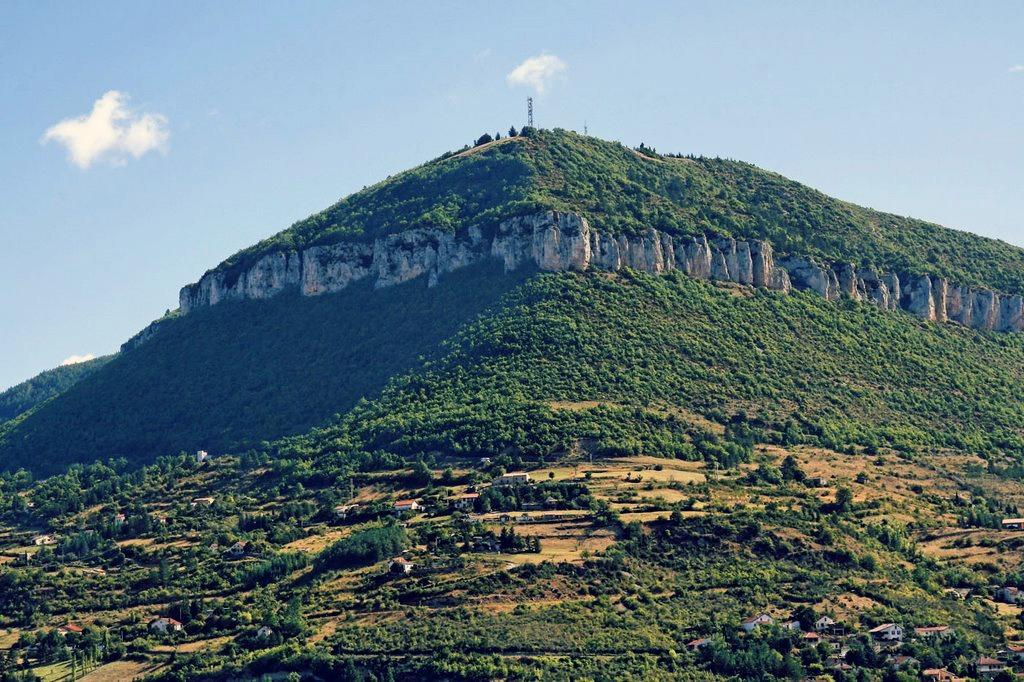
Towering 841 metres above the town of Millau, the Puncho d'Agast is one of the iconic peaks of the Causse Noir. Its poetic name, which means "the tip of the maple tree", evokes the beauty of the place. Filled with history and mystery, it was once home to Celtic druids, according to local legends. Today, the site is popular with nature and adventure lovers. It's an ideal starting point for hikes, mountain bike rides and paragliding flights, offering exceptional panoramic views of the surrounding countryside.
13. What to do in Millau Enjoy the beach

Not sure what to do in Millau and dreaming of a relaxing moment in the sun? The Gourg de Bade municipal beach is the perfect place! Located right in the center of town, it's equipped and supervised, offering a pleasant setting for cooling off, lounging or spending a lovely summer's day with your feet in the water.
Where to stay in Millau?
Here's an overview of different options for accommodation in Millaudepending on your wishes, your budget and the type of stay you're looking for. Millau offers a wide range of hotels, from small family-run establishments to more comfortable establishments overlooking the viaduct or the Tarn.
- Hôtel Cévenol: click here to book this hotel close to the center, with swimming pool and restaurant.
- Mercure Millau: ideally located, this hotel, bookable here, is perfect for a comfortable stay.
- Ibis Millau Centre: a practical and economical option, right in the heart of town. Click here to book your stay.
What to do in Millau when it rains?
When the weather turns rainy, Millau has plenty to keep you busy and under cover. Here are a few ideas for making the most of your stay, even in bad weather:
Visit the museums
- Musée de Millau et des Grands Causses: housed in a former town house, this museum immerses visitors in the town's history, leatherwork, glove-making and paleontology, with superb fossil collections.
- La Graufesenque archeological site: some of the covered areas are ideal for learning about the history of sigillated pottery, even on rainy days.
Discover local know-how
- Glove-making: push open the door of a workshop to discover Millau's famous know-how, sometimes with demonstrations or guided tours.
- Local crafts and products: many local producers (honey, beer, pottery, cheese) open their workshops or stores, perfect for a gourmet and cultural visit.
How do I visit Millau by little train?
- To discover Millau in an original and comfortable way, the little tourist train is an excellent option, especially for a first visit or a family outing. It allows you to explore the town's main sites while enjoying audio commentaries that retrace Millau's history and highlight its heritage.
- The tour, which lasts between 45 minutes and an hour, takes in the historic center, the belfry, Place Maréchal-Foch, the old streets and viewpoints offering a remarkable panorama of the viaduct.
- Departure is usually from the Place Maréchal-Foch or near the Tourist Office.
- The little train runs during the tourist season,generally from May to September, with several departures a day. Commentary is provided in French and occasionally in other languages. Tickets can be purchased on site or through the Tourist Office.
- Prices range from 6 to 8 euros for adults and 4 euros for children. This guided tour is a great way to immerse yourself in local history while enjoying a moment of relaxation.
What to do around Millau
The area around Millau is a veritable melting pot of nature, history and heritage.
- On the way out of town, the emblematic viaduct is a must-see from viewpoints such as Brocuéjouls or Pont de Cureplats, or by passing underneath to admire its impressive structure from another angle. Not far from there, the chaos of Montpellier-le-Vieux offers an astonishing labyrinth of strangely shaped rocks, to be explored on foot, by small train, or via a via ferrata for thrill-seekers.
- On the Larzac plateau, the medieval village of La Couvertoirade plunges visitors into the world of the Knights Templar, with its ramparts, cobbled streets and period buildings. A little further afield, Sainte-Eulalie-de-Cernon 's peaceful architecture bears witness to the region's hospitable past, with its perfectly preserved commandery. For an immersion in cheese-making traditions, Roquefort-sur-Soulzon opens the doors of its cellars, where you can discover the secrets of making the famous cheese matured in natural fleurines.
- The Tarn and Dourbie gorges attract lovers of nature and outdoor activities: canoeing, hiking, climbing or simply relaxing by the water, against a backdrop of breathtaking scenery. Last but not least, the Grands Causses - Causse Noir, Causse Méjean, Causse du Larzac - offer an ideal playground for hikers, discovering an unspoilt environment of dry grasslands, forests, rocky chaos and grandiose viewpoints.


